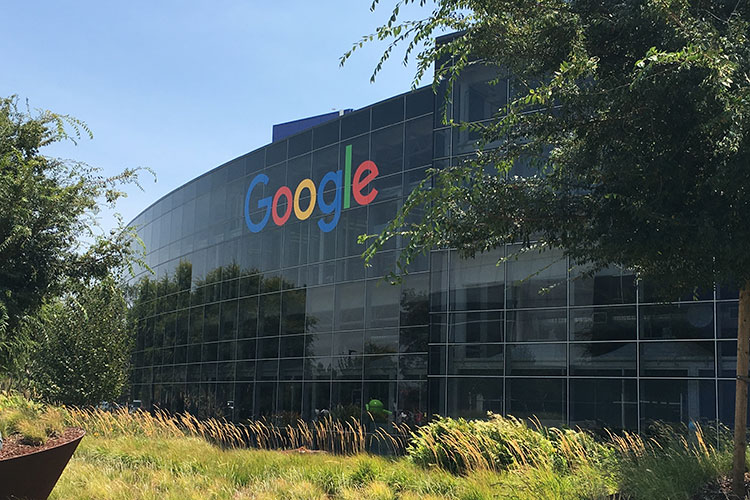The pandemic is driving disruption, innovation and ‘a new reality’ at work

Technology had been evolving steadily, and the millennial generation was already emerging as a powerful influence in the American knowledge workforce. But since the COVID-19 pandemic hit, American businesses have been forced to adapt or face disaster.

Now, as the pressures of the pandemic ease, there will be no returning to normal, says UC Berkeley author and business adviser Homa Bahrami, a senior lecturer at the UC Berkeley Haas School of Business. In the short span of 16 months, the pandemic has released an innovation supernova, and its energy will radiate through businesses for years.
It’s not just that workers now want to work more from home. And it’s not that employers are OK with that. Rather, Bahrami said in an interview, the changes are going to touch virtually every pod, office and suite, from the satellite branch to headquarters, and affect job-seeking and recruitment, scheduling, creative collaboration, physical workplaces, management styles, and the very yin and yang of life at work and outside of work.
Bahrami is in a position to know. She consults with top corporations in the U.S. and Europe and has written extensively on managerial psychology and the importance of flexibility in the knowledge industry. She is also a faculty director at the Berkeley Haas Center for Executive Education. And she stays connected with a legion of former students.
[This interview has been edited for length and clarity.]
Berkeley News: You’ve suggested that the COVID-19 pandemic and the work-from-home period over the past 16 months is fundamentally changing the way we think about work.

Homa Bahrami: In yesterday’s world, pre-COVID, we organized our lives around our work schedules. We’d drop off our kids at school, have someone pick them up after school, so we can be at work. Now, it’s exactly the opposite. Work has to fit into our lives.
One group of knowledge workers, many with young families, now say, “I don’t really want to go back to the office. I can get my job done at home. I don’t have to commute. I can take these chunks of time off, spend quality time with my kids and work in the evening. It suits me better.”
But some people do want to return to the office, don’t they?
Yes, I hear from another group at the other end of the spectrum.
One former student recently mentioned, “I had a 30-minute commute to work, and that was my mental transition time. After breakfast, I would get in the car and switch gears. During my commute, I would think about my upcoming meetings, my priorities for the day, and get myself mentally prepared.”

I hear from many millennials who say they miss the social aspects of being in the office — going for drinks with colleagues after work, jogging with others during lunch, bumping into people at the cafeteria.
And among senior leaders — one person who’s the head of engineering in a big software company was saying, “My biggest tool for creativity was the whiteboard in my office. I’d ask my team to pop in. We would brainstorm, go back and forth, and then by the end of the hour, we’d crack the code. We’d figure things out. I can’t do that on Zoom.”
Thinking of hybrid home-office work schedules and greater employee autonomy —the repercussions of these changes will be huge.
I don’t think we can go back to pre-COVID practices, exactly as they were. We’ve experienced the flexibility of working from home. The pace of digital adoption has accelerated. The generation that’s grown up with digital tools and information at their fingertips does not have the same perspective as the generation that grew up using index cards in a library.
We have to think about the best and worst experiences of the past 16 months and re-imagine how work can be done, going forward.
We’re witnessing a volcanic eruption, and trying to figure out what’s next.
In a business, you’d expect the owners or the managers would want everyone rowing in the same direction. Trying to accommodate all of these divergent preferences seems like a real challenge.
There is a spectrum of different philosophies and corporate policies. On the one hand, companies like Twitter say, “Nobody needs to ever come back to the office. You can come back if you want to, but you don’t need to. And by the way, don’t think by coming back to the office and rubbing shoulders with leaders who happen to be in the office you are going to advance your career. We’re not going to differentiate between those who come to the office and those who are remote.”

On the other hand, companies like Amazon are saying, “We want to go back to an office-centric culture because it’s easier for us to collaborate, to innovate, to brainstorm, to create that emotional and cultural bond if we’re together.”
Then companies like Google and Apple are somewhere in the middle. They say, “We’re going to have a blended or hybrid model. You should come to the office at least three days a week.” And remember, Apple and Google have made huge investments in the physical ambience of their Silicon Valley campuses and created nice work settings. They think face time is important to minimize cultural dilution, to build trust and make it easier to collaborate.
In other words, one size doesn’t fit all. Companies will experiment with different approaches, and we’ll see what happens.
What might that experimentation look like?
Experiments revolve around different practices. For example, some companies are categorizing their talent pools based on what they do — some need to be in the office very often, while others may be able to work completely offsite. If I’m a coder, I can work on my own. My work is stand-alone. If I am in sales and have my quota and territory, why should I go to the office? I should be out there with my customers.
But if I happen to be a product designer, and I’m part of a core team with a lot of interdependencies, then it helps to spend face time with my colleagues. We can brainstorm and make key decisions more effectively.
Another set of experiments revolves around compensation. Many tech companies are headquartered in the Bay Area, but a lot of their workers may choose to move to other locations, for cost of living, family or lifestyle reasons.
So, an employee might assume, “I’ll move to Tennessee because of the lower cost of living, but I will still get my Bay Area salary.” A number of companies I know are creating cost-of-living zones. Your compensation will be adjusted, depending on where you choose to live, in zone A, B, C or D. We’ll see how employees respond.
You describe a world in which employees are going to have a lot of options for matching their work with their preferred lifestyle or their stage of life.
That’s true for many knowledge workers who have specialized skills that are in demand. As a result, retaining critical employees will be a big challenge. A recent survey by McKinsey suggested that 25% of workers will change jobs during the next 12 months. Similarly, a Microsoft survey indicated that 41% of workers may quit their current positions this year.

Let’s assume I work for a company that expects its workers to come to the office at least three days a week. I may say to myself, “I don’t want to go back to the office. I have a baby, and if I can work from home, I don’t need to pay for child care or commute. So, I’ll apply for a job with a purely remote company — like Twitter or Slack.”
Flexible work options will be a differentiating factor for companies that have to recruit employees with scarce, specialized expertise. Every tech company I know is taking the pulse of their employees to tune in to their current sentiments. Based on that assessment, they have to adjust their policies. So, the next few months will be very telling.
Are there particular challenges for women who have been working from home? As offices begin to reopen, do their experiences diverge from their male colleagues?
Anecdotally, several professional women I know are leaving their jobs.
A former student who used to work for Google is setting herself up as a contractor. She says, “I don’t want to be a full-time employee. I’ve got two young kids. During COVID, it gave me a lot of flexibility to work from home. I can do things during the day that in the old days I could only do during the weekend. I’ve saved time and money on my commute. I’m spending quality time with my kids. But I am also getting my work done.”
But her colleagues say, “What about income predictability and health benefits?” and she says, “It’s a tradeoff — I can pay for my own health care because, as a contractor, I earn more money. What I need is flexible work.”
There is no perfect solution. Many women are making these tradeoffs because they’ve been the focal point for taking care of children or elderly parents. I’m not saying men don’t do these tasks, but I hear from many professional women who say, “Flexibility matters a lot to me.”
When we think of a business leader, a corporate leader, we might subconsciously go to a military image — a commander. Defining a vision and issuing orders. You’re talking about a different kind of leader altogether.
The old model was based on what I call “parent-child” leadership: The boss tells me what to do, evaluates my performance, recommends me for a raise or a promotion. In exchange for that, if I do as I am told, I get the boss’ mentorship and loyalty.

Now, in knowledge circles, we’re shifting to what I call “peer-to-peer” leadership. This is about the ability to switch gears, wear different hats and leverage a range of different styles. I characterize it as being “super-flexible.” I may be the boss, but I am also the coach, the mentor, the facilitator, the obstacle remover, the supporter. I have to tune in to the relevant context, flex my style and adapt to the team members’ individual needs. One size does not fit all.
In 1911, Frederick Taylor wrote a famous book called Scientific Management. It became the core foundation for many common management practices of the industrial age. The book was based on the premise that in every organization you have the thinkers, who strategize and plan, and then you have the doers, who execute these plans. If you are the manager, you tell the doers what they should do and how they should do it.
But that doesn’t fly with knowledge workers in 2021.
If I’m the software architect, and you are in charge of engineering, yes, I report to you. You are my accountable C-suite executive. You can tell me your vision for the project and the outcome you expect. You can be my sounding board, remove barriers for me, and give me your input and suggestions.
But you can’t figure out exactly how I should go about executing and delivering this project. In this context, I’m the expert.
Your observations, taken together, seem to suggest that workers will have more options and more power in the relationship with an employer or a potential employer.
It depends on your capabilities and expertise. If you’re a software developer or a designer with specialized skills, you’ve got many options in today’s digital world. But if I’m a high school dropout with no differentiated expertise, then what choices do I have?
We have to re-imagine how our educational system can help people adapt to new realities, develop relevant skills and make them relevant for tomorrow’s work. That’s a major societal challenge.
